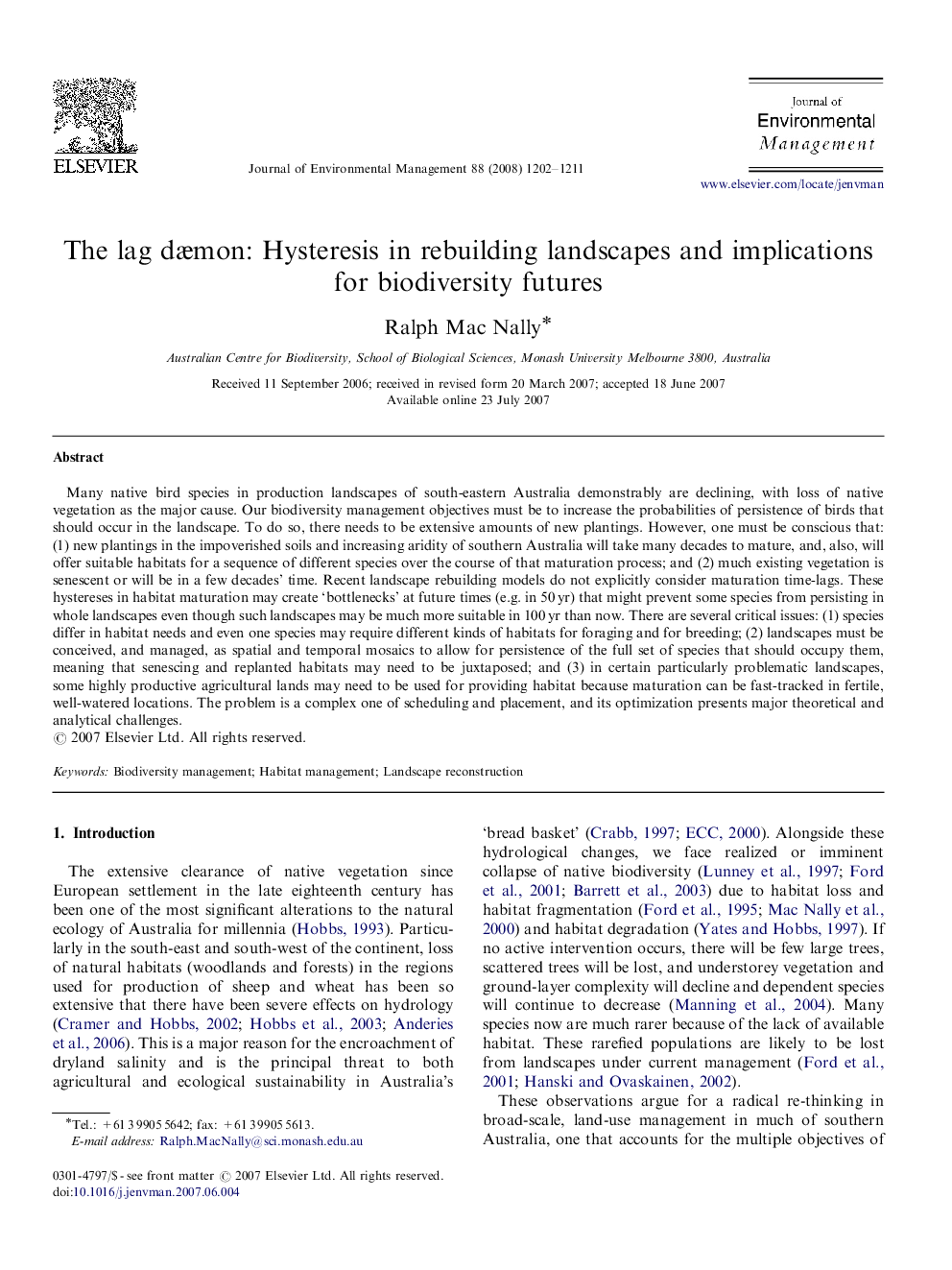| کد مقاله | کد نشریه | سال انتشار | مقاله انگلیسی | نسخه تمام متن |
|---|---|---|---|---|
| 1058315 | 947115 | 2008 | 10 صفحه PDF | دانلود رایگان |

Many native bird species in production landscapes of south-eastern Australia demonstrably are declining, with loss of native vegetation as the major cause. Our biodiversity management objectives must be to increase the probabilities of persistence of birds that should occur in the landscape. To do so, there needs to be extensive amounts of new plantings. However, one must be conscious that: (1) new plantings in the impoverished soils and increasing aridity of southern Australia will take many decades to mature, and, also, will offer suitable habitats for a sequence of different species over the course of that maturation process; and (2) much existing vegetation is senescent or will be in a few decades’ time. Recent landscape rebuilding models do not explicitly consider maturation time-lags. These hystereses in habitat maturation may create ‘bottlenecks’ at future times (e.g. in 50 yr) that might prevent some species from persisting in whole landscapes even though such landscapes may be much more suitable in 100 yr than now. There are several critical issues: (1) species differ in habitat needs and even one species may require different kinds of habitats for foraging and for breeding; (2) landscapes must be conceived, and managed, as spatial and temporal mosaics to allow for persistence of the full set of species that should occupy them, meaning that senescing and replanted habitats may need to be juxtaposed; and (3) in certain particularly problematic landscapes, some highly productive agricultural lands may need to be used for providing habitat because maturation can be fast-tracked in fertile, well-watered locations. The problem is a complex one of scheduling and placement, and its optimization presents major theoretical and analytical challenges.
Journal: Journal of Environmental Management - Volume 88, Issue 4, September 2008, Pages 1202–1211